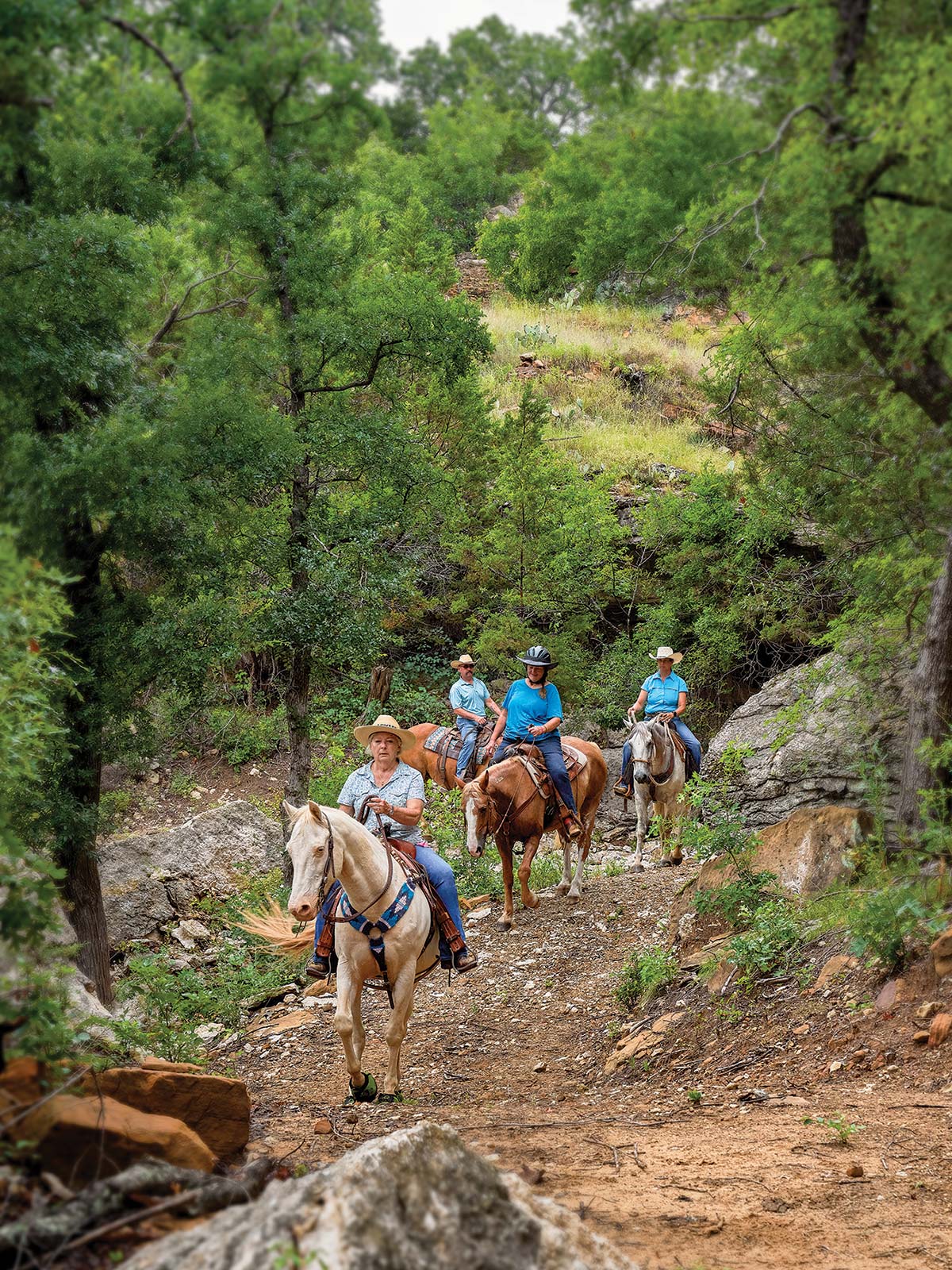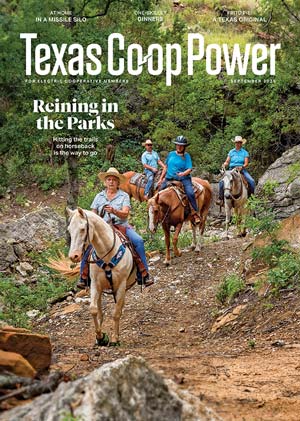Mary Apple-Williams was riding her retired ranch horse, Slick, on the equestrian trails at Benbrook Lake south of Fort Worth in April 2016 when she noticed sections of two trails were closed due to storm damage.
After talking with a park ranger, she discovered the nonprofit Texas Equestrian Trail Riders Association helped maintain the trails. She immediately joined the organization, reached out to her region’s manager and led efforts to reopen the trails, which are now maintained by TETRA continually.
For her and many others who find great joy in trail riding, this is important work.
“For equestrians, riding is more than a hobby; it’s a profound connection with nature,” Apple-Williams says. “From the fragrance of spring blooms to the thrill of mountain trails, every ride is a celebration of the natural world.”
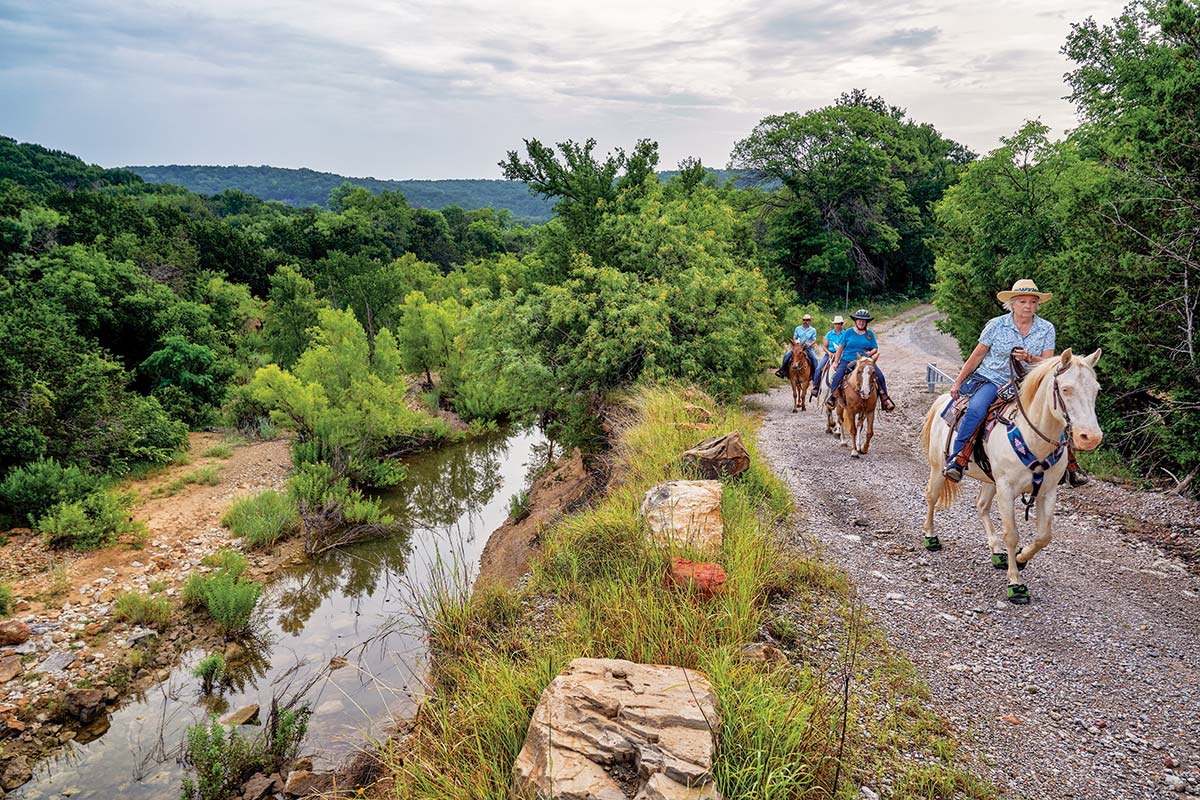
From right, Mary Apple-Williams on Cutter, Brenda Laing on Sunshine, Staci Barnes on Shadow and Matt Barnes on Lily depart the equine campground at Palo Pinto Mountains State Park in North Texas. The park is expected to open in 2026.
Dave Shafer
Apple-Williams, who went on to serve as TETRA president from 2022 to 2024, says the nonprofit’s goal is to develop and maintain riding trails across the state.
“We’re a voice for equestrians in the state of Texas, and that is needed so much more today than it has been in the past,” Apple-Williams says.
TETRA members and volunteers maintain more than three dozen trails, including some at Army Corps of Engineers lakes and many at state parks, through fundraising rides and scheduled workdays during the spring and fall. Volunteers put in a combined 800–1,000 hours a year doing trail maintenance, Apple-Williams says.
At Caprock Canyons State Park and Trailway in the Panhandle, TETRA helped prevent a section of the trail built along a former railroad from being shut down in May 2022. That’s despite the group’s aging and dwindling membership, declining from 2,000 members when it was founded in 1997 to fewer than 300 statewide today.
“We were out there replacing boards off of the railroad trestle, and that was hard work,” Apple-Williams says. “When you look at our volunteers, the average volunteer age of our organization—we’re not spring chickens anymore.”
Many state parks and other natural areas are supported by nonprofit organizations founded by volunteers, including TETRA members, who enjoy using and maintaining the outdoor spaces. “We support those groups with labor, expenses [and] grants,” Apple-Williams says. “We’ll do a benefit ride out there where any funds we collect … we turn back into that group to help maintain that park.”
Since equestrian trails are often multiuse trails, TETRA’s restoration efforts also benefit hikers and mountain bikers at state parks, where attendance has topped 9 million each year since 2021, according to the Texas Parks and Wildlife Department.
Apple-Williams is now a manager for TETRA’s Region 4, which encompasses a section of North Texas that includes the soon-to-open Palo Pinto Mountains State Park. To assist construction efforts, TETRA held trail rides at the site in 2017 and 2018 and donated proceeds to the park’s nonprofit, Palo Pinto Mountains State Park Partners, which advocated for trail riders during the park design process.
In November 2024, she volunteered at an on-site workday.
“To me, that day wasn’t a workday but a preview of what riders would experience for years to come—beautiful streams, winding trails through large boulders [and] high plateaus where you can see for miles,” she says.
If you ask Apple-Williams about her favorite place to ride in Texas, she can’t pick one because there are too many amazing and diverse trails.
“I think the best place to ride is Texas,” she says.
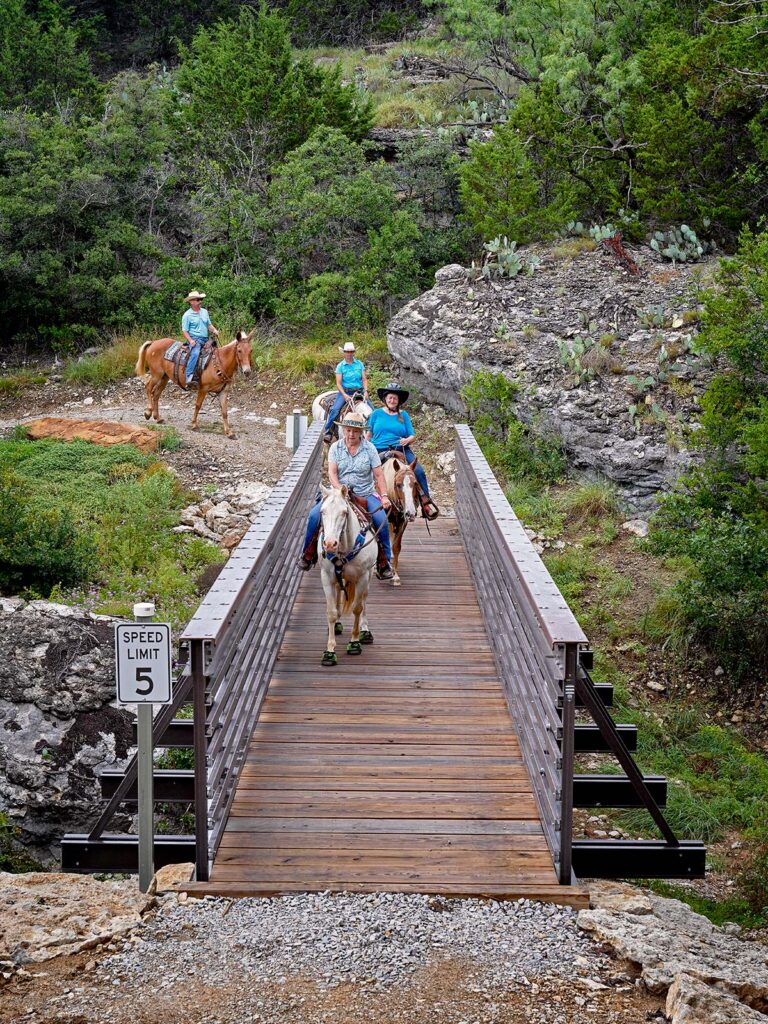
State parks feature 19 equestrian trails, and visitors at Big Bend Ranch State Park in South Texas and the Hill Country State Natural Area can rent horses.
Dave Shafer
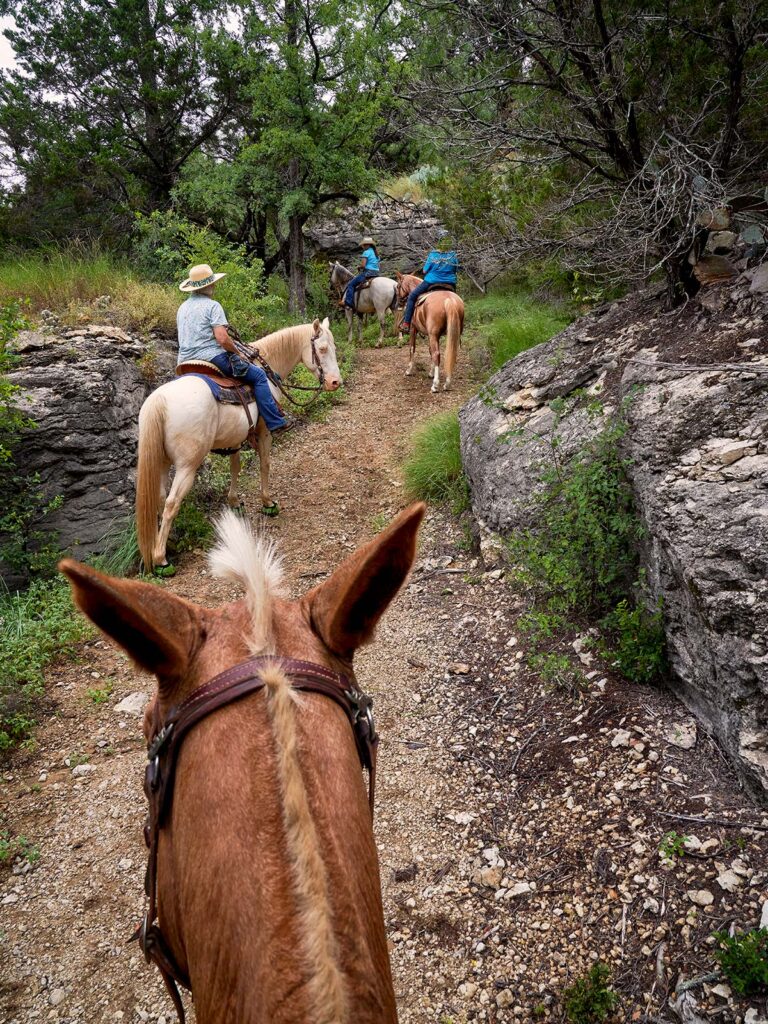
The view from the back of Lily, Matt Barnes’ mule.
Dave Shafer
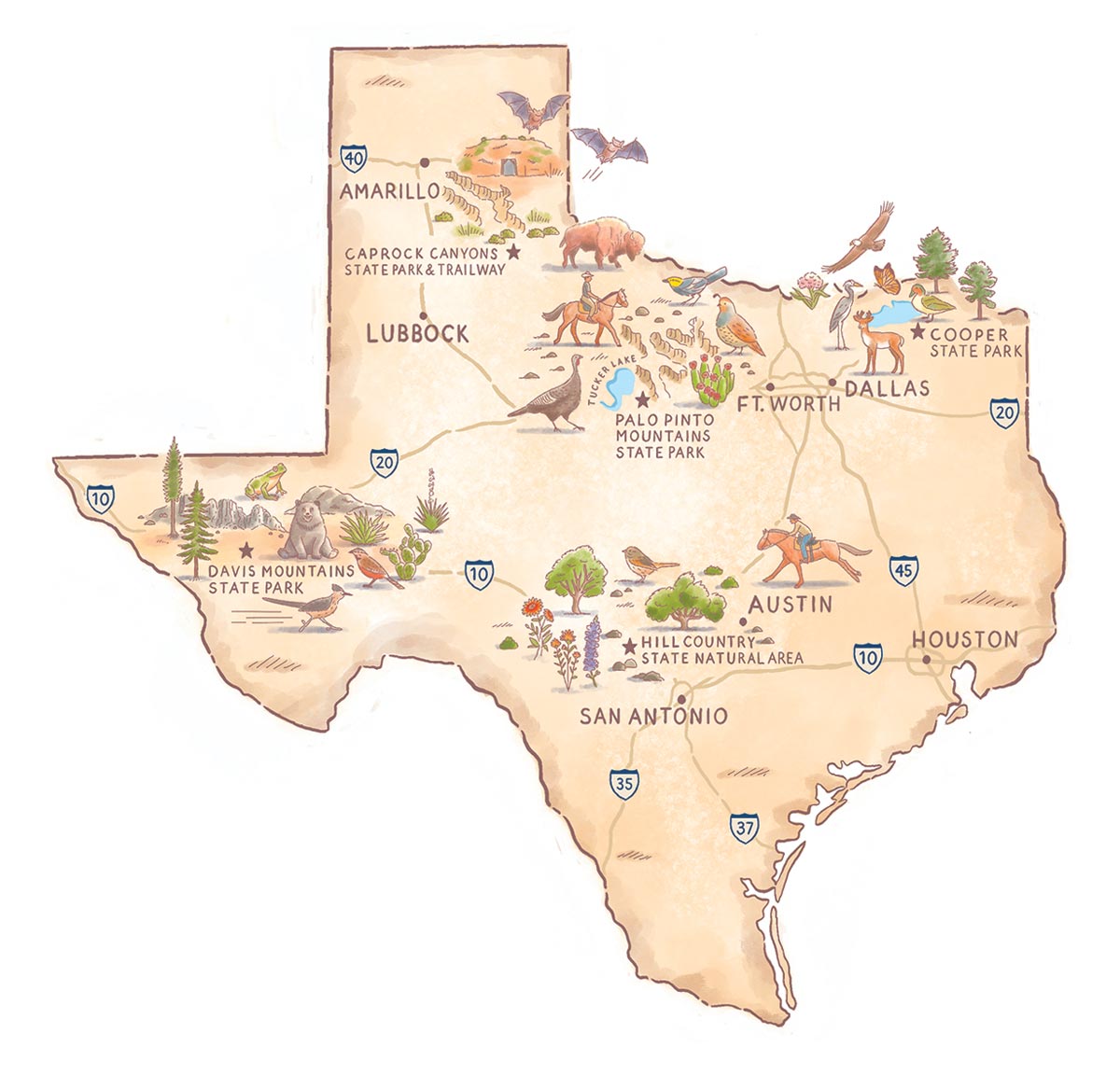
Map: Ryan O’Rourke
Ready to Ride?
Explore five state parks that are top picks among trail riders
Across the Lone Star State, there are 19 equestrian trails in state parks (all of which require proof of a current Coggins test, which screens for potentially fatal equine infectious anemia). These are some of trail riders’ favorites.
Caprock Canyon State Park and Trailway
Home to the Texas State Bison Herd, this 15,000-acre park has 90 miles of trails, including the equestrian-friendly 64-mile-long multiuse trailway built on a former freight and passenger railway that operated from the early 1920s until 1989. The trailway has a variety of access points and passes through Clarity Tunnel, home to a half-million Mexican free-tailed bats. The Panhandle park also has a dozen primitive equestrian campsites with two corrals each.
Cooper State Park
Located on Jim Chapman Lake in northeast Texas, this park is an angler’s paradise with an abundance of water activities and trails to explore. The park consists of two areas—the northern Doctor’s Creek Unit and the equestrian-friendly South Sulphur Unit on the southern shore. The challenging Buggy Whip Equestrian Trail is a 10-mile adventure through dense forests and creek ravines. A dozen equestrian campsites have electricity but no stables.
Davis Mountains State Park
Home to javelinas, 260 bird species, mountain lions and canyon tree frogs, this unique high-elevation ecosystem at the base of the Davis Mountains was formed 25 million–30 million years ago by volcanic eruptions. This volcanic activity is responsible for the West Texas park’s most unique formations: Frazier’s Canyon, Sleeping Lion and Barrel Springs. Trail riders can explore the stunning landscape on 11 miles of trails that meander from 4,900 to 5,700 feet with scenic overlooks in the Limpia Canyon area. There are six primitive equestrian campsites.
Hill Country State Natural Area
At this former ranch northwest of San Antonio, 40 miles of shared-use equestrian trails cover terrain that includes flat, broad prairies and steep, rocky canyons. The park’s extensive equestrian facilities include a day-use area near the headquarters with a water trough, hitching posts and a flush toilet. Overnight equestrian accommodations include six primitive campsites with pens, a group camp that has a barn with stalls for nine horses, and a 1930s ranch house that sleeps 12 humans and has stalls for five horses.
Palo Pinto Mountains State Park
Tucked halfway between Abilene and Fort Worth, Palo Pinto Mountains State Park will be Texas’ first new state park in 18 years when it opens. The Texas Parks and Wildlife Department has not set an opening date. The park will comprise nearly 5,000 acres of former ranchland with a rugged landscape of scenic plateaus, sheltered canyons and crisscrossing waterways, including Palo Pinto Creek near the northern boundary. The 90-acre Tucker Lake will be the park’s star attraction for fishing, boating, swimming and birding, and there will be several multiuse trails, including 11 miles of equestrian trails with substantial trailhead parking for trail riders. Each of the 10 equestrian campsites will be equipped with a two-horse corral, water and electrical hookups.
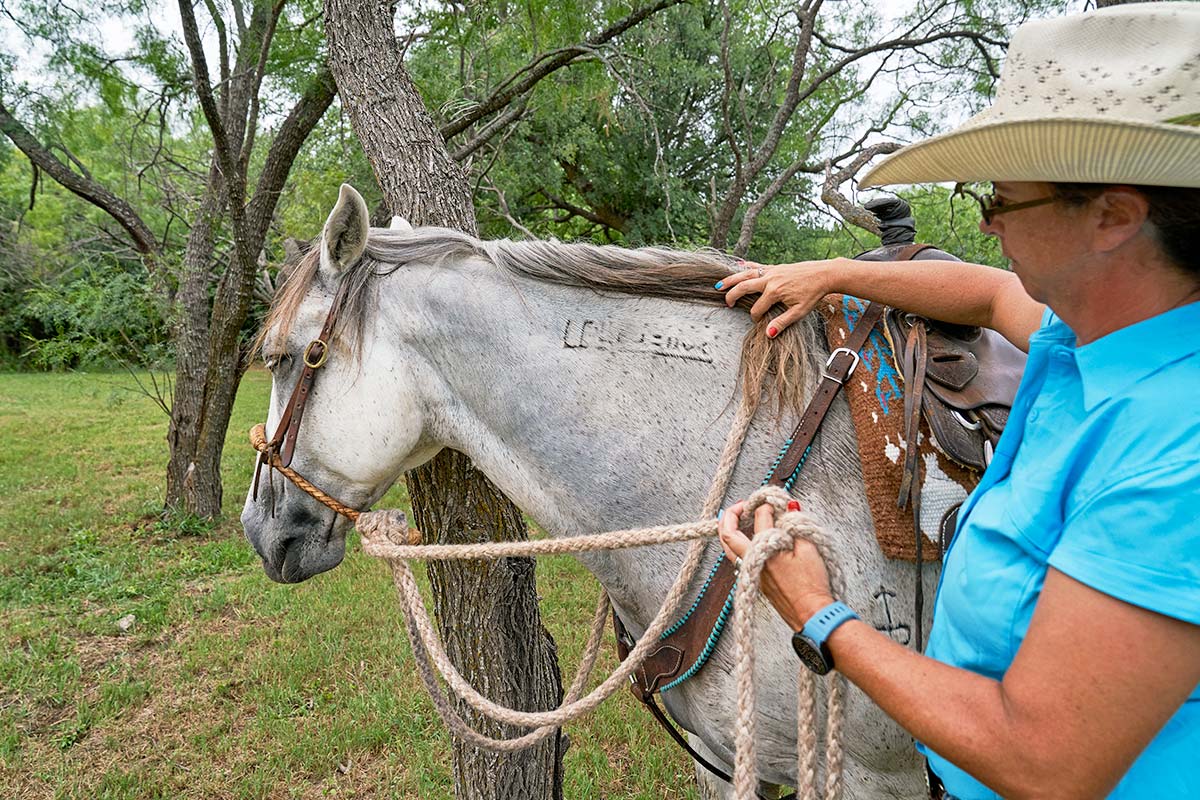
Staci Barnes shows Shadow’s brand, applied by freeze branding.
Dave Shafer
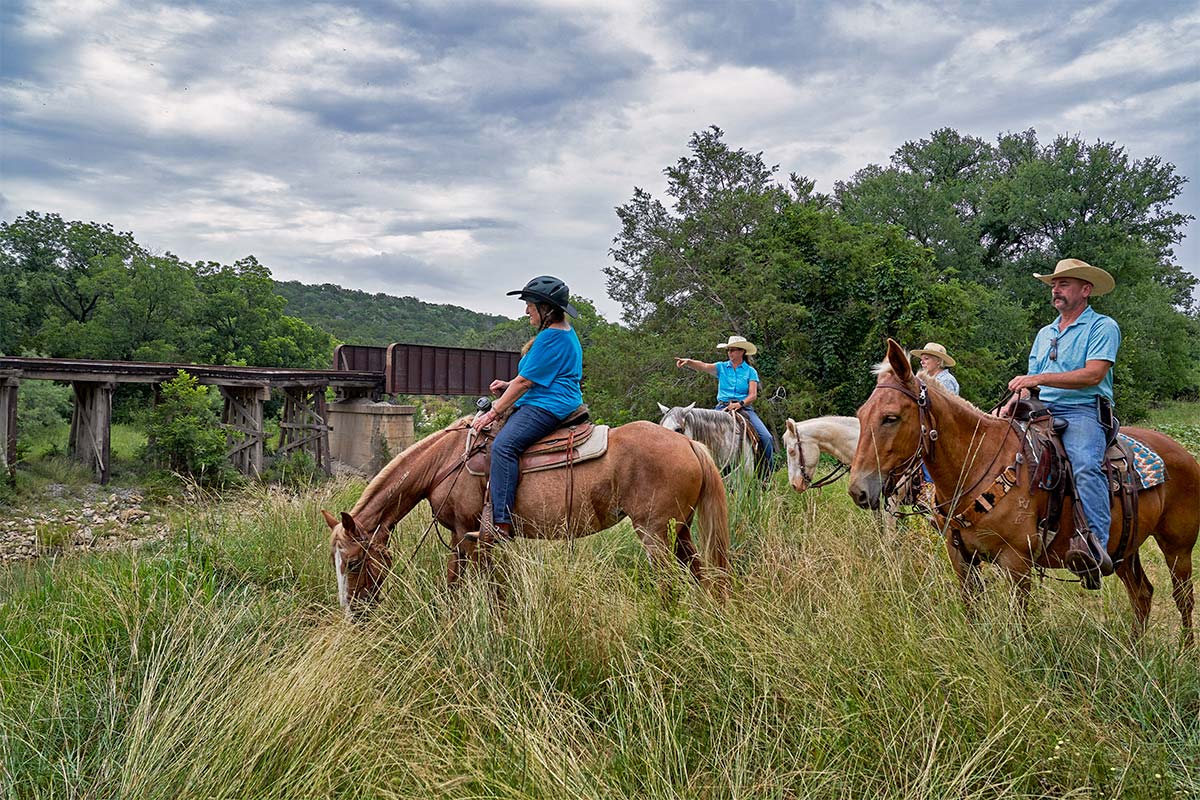
“For equestrians, riding is more than a hobby; it’s a profound connection with nature,” Apple-Williams says.
Dave Shafer
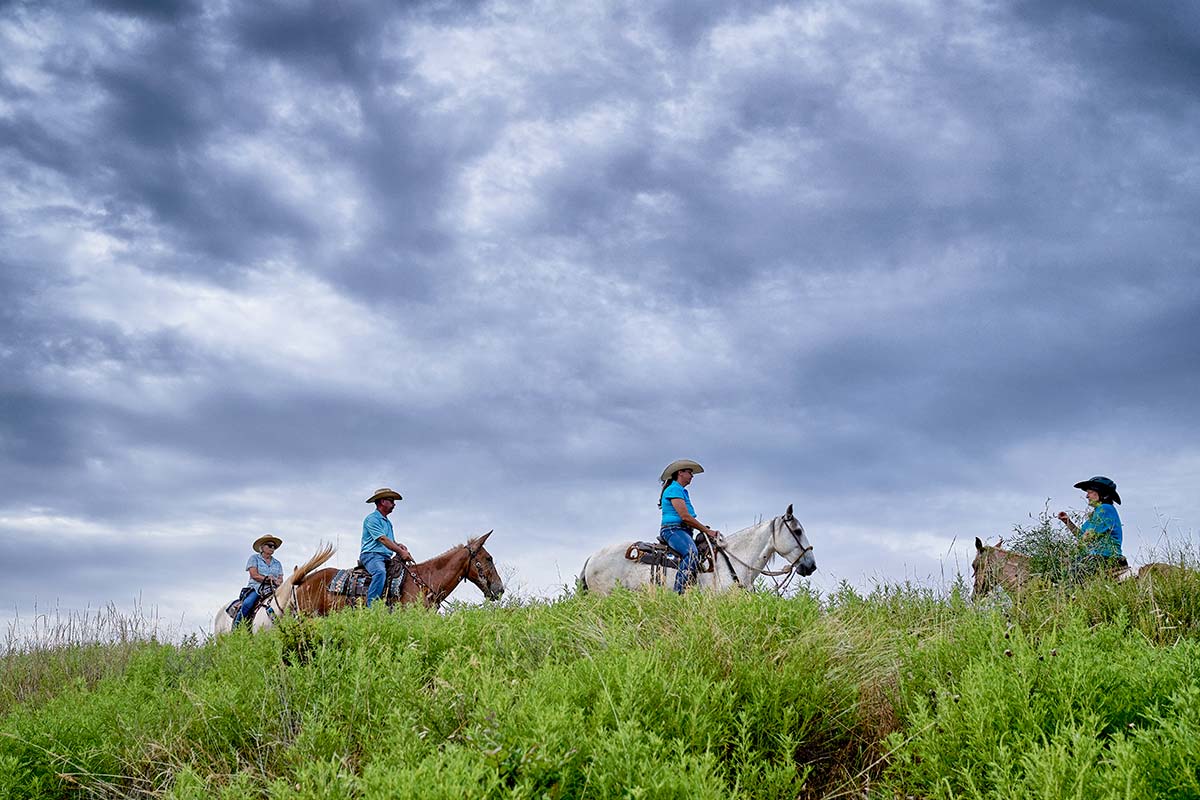
Early-morning trail riders at Palo Pinto Mountains State Park, which will be the first new state park in 18 years.
Dave Shafer
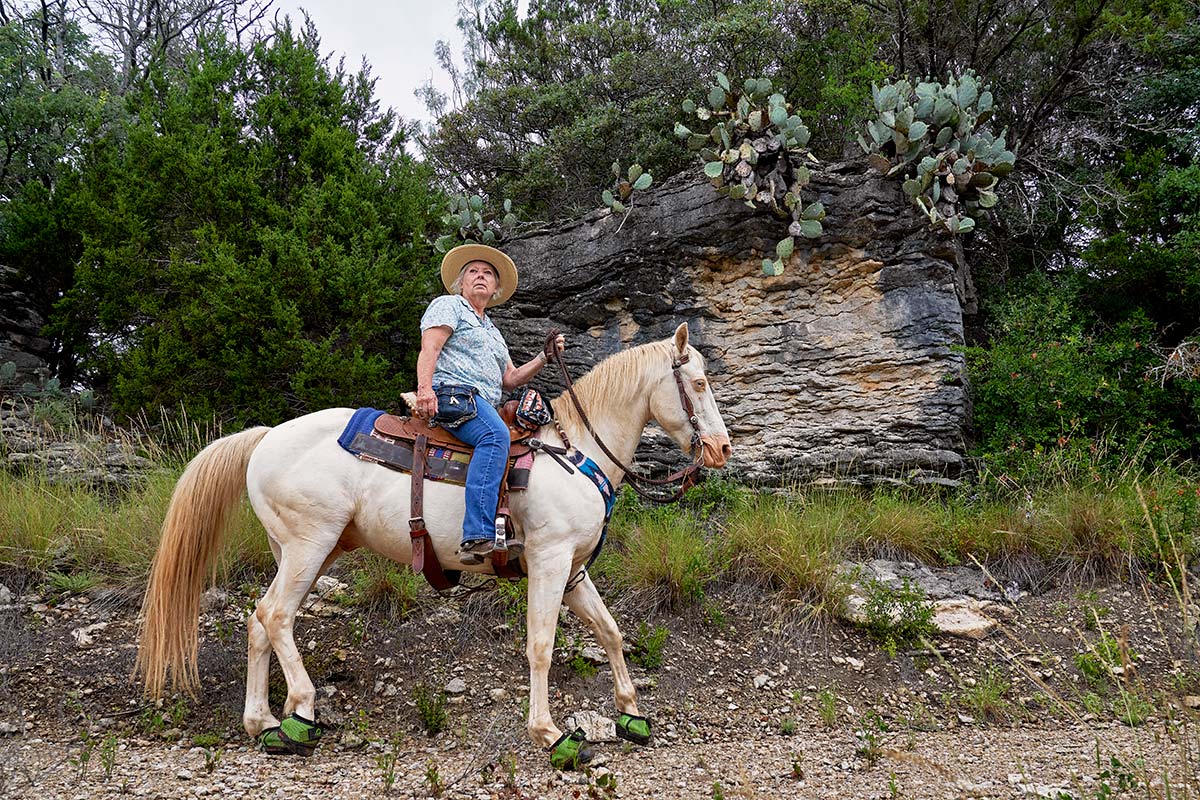
Apple-Williams joined the Texas Equestrian Trail Riders Association in 2016. The organization helps maintain and improve horse trails in Texas parks.
Dave Shafer
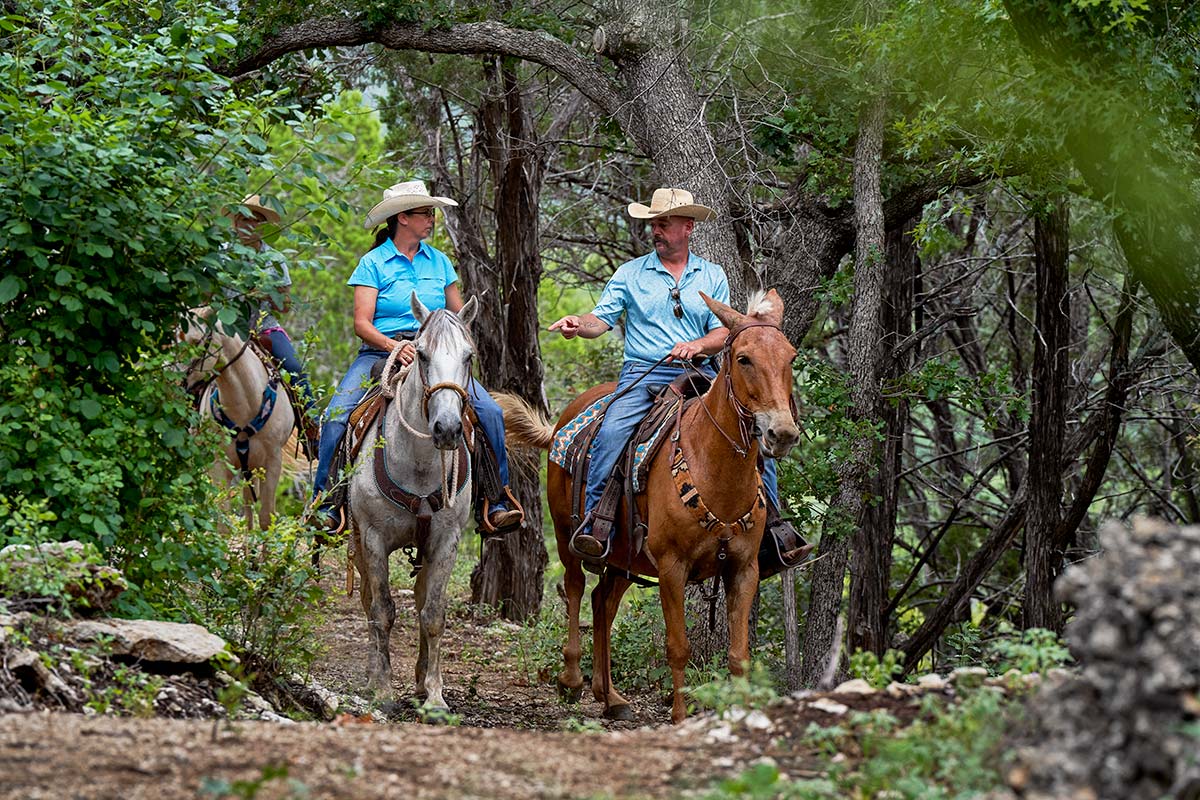
Staci and Matt Barnes take in the beauty of Palo Pinto Mountains State Park.
Dave Shafer
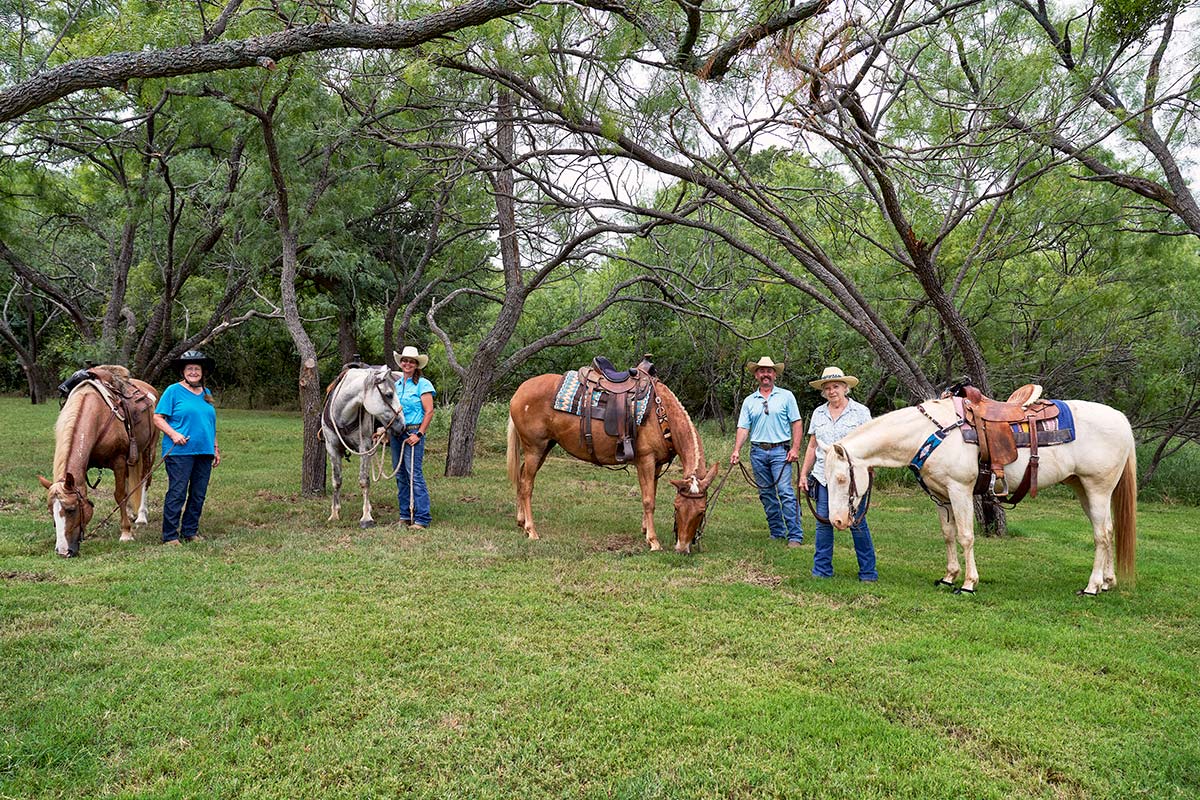
Taking a breather near Tucker Lake.
Dave Shafer
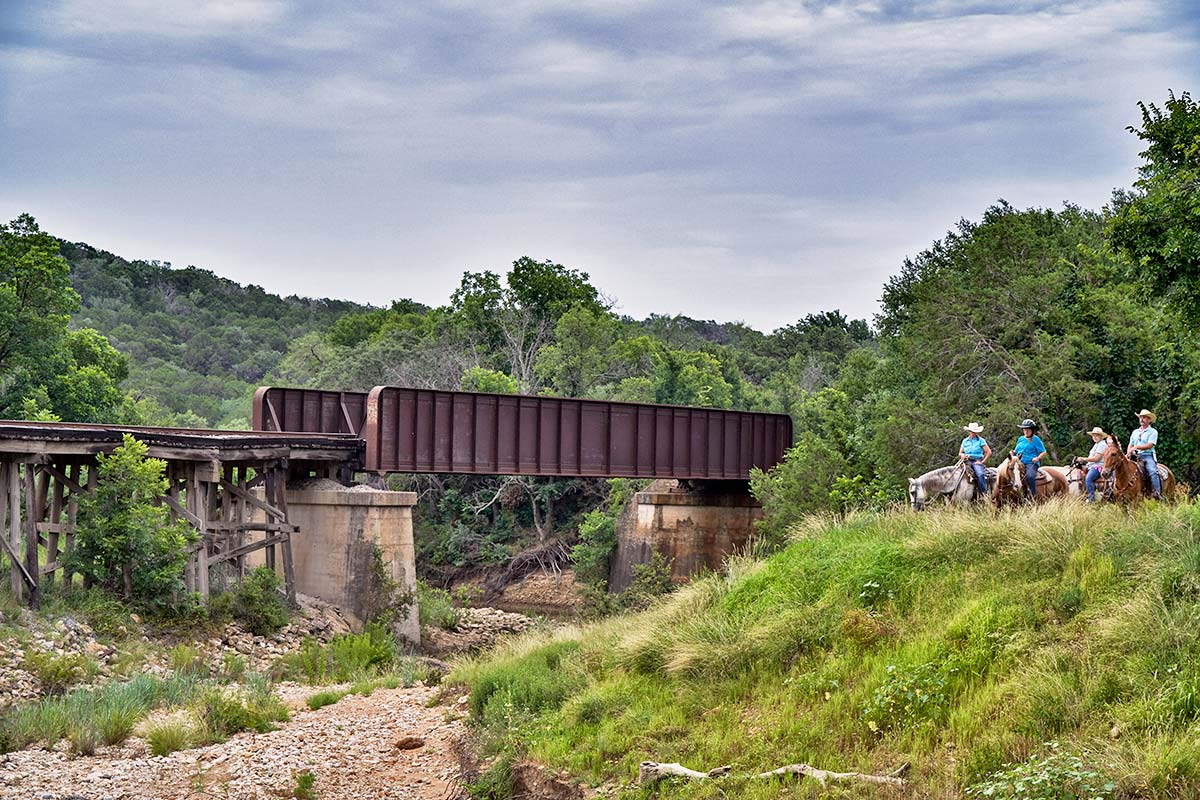
A train trestle bridge that crosses Russell Creek in the park creates a nature overlook and rustic scene.
Dave Shafer
